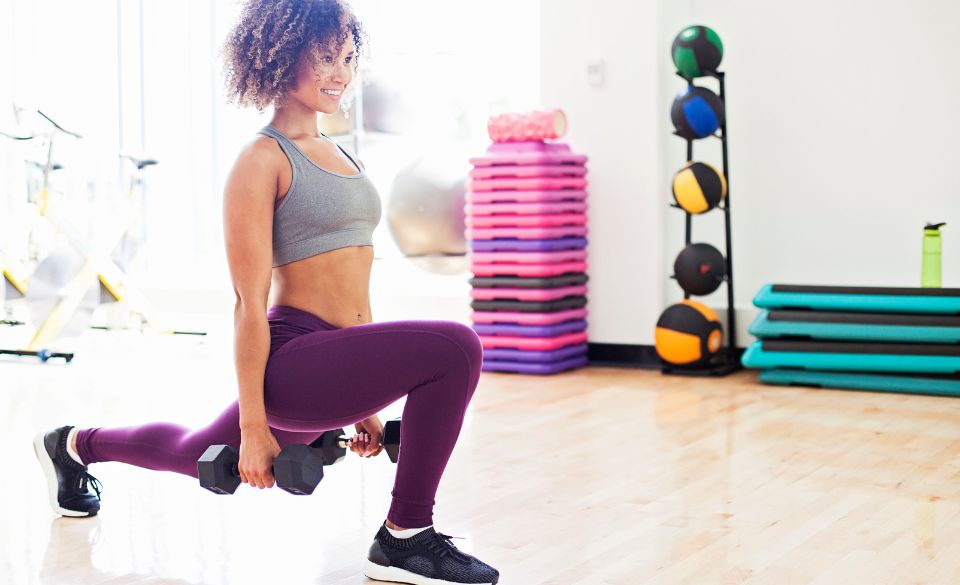
Pulse Lunge: A Fun and Effective Workout Move
Page Contents
Are you looking for a way to spice up your leg workout routine? Look no further than the pulse lunge! This dynamic move is a great way to tone your legs and improve your balance, all while having fun and getting your heart rate up. In this post, we’ll dive into what the pulse lunge is, how to do it, and the benefits it offers.
What Is a Pulse Lunge?
If you’re familiar with basic lunges, then you’re well on your way to mastering the pulse lunge. Essentially, a pulse lunge is a variation of the traditional lunge that involves adding a small, quick pulse at the bottom of the movement.
During a pulse lunge, you’ll lower your body into a lunge position as you would during a regular lunge, but instead of returning to a standing position, you’ll lower your body a little further down and quickly pulse up and down a few times before returning to standing.
This small movement may not seem like much, but the quick pulse engages your muscles in a unique way, making this exercise a great addition to any lower-body workout routine. Plus, it’s an excellent way to add some variety to your workout and keep things interesting.
One of the best things about pulse lunges is that they can be done almost anywhere without any equipment. Whether you’re at home, in the park, or at the gym, all you need is some open space and a willingness to try something new. So, grab a mat, lace up your sneakers, and let’s get started with this fun and effective exercise!
How Do You Do a Pulse Lunge?
The pulse lunge is a simple exercise that can be done anywhere, anytime, without any equipment. Here’s a step-by-step guide on how to do a pulse lunge:
1. Start in a standing position with your feet shoulder-width apart.
2. Take a big step forward with your right foot and bend your knee until your thigh is parallel to the ground.
3. Lower your body down into a lunge position until your back knee almost touches the ground.
4. Instead of standing back up, pulse your body up and down a few inches while staying in the lunge position.
5. After pulsing, return to the original lunge position.
6. Push off with your right foot and return to a standing position.
7. Repeat on the other side with your left foot.
It’s important to keep your core engaged and your back straight throughout the exercise. Start with a few repetitions on each side, and gradually increase the number of sets and repetitions as you build strength and endurance. Remember to listen to your body and rest if you feel any discomfort. With practice, the pulse lunge will become a great addition to your workout routine.
Benefits of Doing Pulse Lunges
There are many benefits to doing pulse lunges, which make them a great addition to any workout routine. Here are some of the main benefits of doing pulse lunges:
Increased lower body strength: Pulse lunges are a great way to strengthen your legs, particularly your quadriceps, hamstrings, and glutes. A study published in the Journal of Strength and Conditioning Research found that pulse lunges were effective in increasing lower body strength in healthy, active adults.
Improved balance and stability: Since pulse lunges require you to maintain a lunge position and pulse up and down, they can help improve your balance and stability. This is particularly beneficial for older adults, as a study published in the Journal of Geriatric Physical Therapy found that balance training can improve balance and reduce the risk of falls in older adults.
Cardiovascular benefits: Pulse lunges can also provide cardiovascular benefits, particularly if you perform them in a circuit or as part of a high-intensity interval training (HIIT) workout. A study published in the European Journal of Applied Physiology found that HIIT workouts that included lunges improved cardiovascular fitness in young adults.
Improved flexibility: Pulse lunges can also help improve your flexibility, particularly in your hip flexors and quads. This is important for anyone who sits for long periods of time or engages in activities that can tighten these muscles. A study published in the International Journal of Sports Medicine found that static stretching of the hip flexors improved flexibility in healthy adults.
In addition to these benefits, pulse lunges are a versatile exercise that can be modified to increase or decrease the intensity. They can also be combined with other exercises to create a full-body workout.
Pulse Lunge vs. Normal Lunge – What’s the Difference?
While both pulse lunges and normal lunges target the lower body muscles, there are some key differences between the two exercises.
A normal lunge involves stepping forward with one leg and bending the knee until the thigh is parallel to the ground, then pushing back up to standing position. This exercise primarily works the quadriceps, hamstrings, and glutes.
A pulse lunge, on the other hand, involves performing a normal lunge, but instead of returning to standing position, you pulse up and down while in the lunge position. This small, pulsing movement targets the muscles in a different way, providing additional resistance and creating a deeper burn.
The pulsing motion in a pulse lunge is also great for building muscular endurance, as it requires you to hold the lunge position for a longer period of time. This can help increase your overall fitness and endurance.
While both exercises are effective at building lower body strength and endurance, pulse lunges may be more beneficial for individuals looking to switch up their routine and challenge their muscles in a different way. However, it’s important to note that both exercises can be modified to increase or decrease the intensity, so it’s important to choose the exercise that works best for your fitness level and goals.
Ultimately, whether you choose to do pulse lunges, normal lunges, or a combination of both, incorporating lunges into your workout routine is a great way to build lower body strength, improve balance and stability, and increase overall fitness.
Muscles Used When Doing a Pulse Lunge
When performing a pulse lunge, several muscle groups in the lower body are activated. These include:
Quadriceps: The quadriceps muscles located in the front of the thigh are the primary muscles targeted during a pulse lunge. These muscles are responsible for extending the knee and helping to lift the body during the exercise.
Glutes: The gluteus maximus, medius, and minimus muscles located in the buttocks are also activated during a pulse lunge. These muscles help to extend the hip and stabilize the pelvis.
Hamstrings: The hamstrings muscles located in the back of the thigh work in conjunction with the quadriceps to extend the hip and knee during the exercise.
Calves: The gastrocnemius and soleus muscles located in the calf help to stabilize the ankle joint and assist with plantar flexion of the foot.
In addition to these main muscle groups, other smaller muscles in the lower body also play a role in performing a pulse lunge. These include the adductors and abductors of the hip, which help to stabilize the pelvis and control the movement of the legs.
By targeting these muscle groups in the lower body, pulse lunges can help to improve strength, endurance, and overall fitness. However, it’s important to note that proper form and technique are crucial when performing this exercise to avoid injury and maximize the benefits.
In conclusion, the pulse lunge is a fun and effective exercise that can help improve your leg strength, balance, and stability. Whether you’re a seasoned athlete or just starting out, adding pulse lunges to your workout routine is a great way to challenge yourself and keep things interesting. So next time you hit the gym or head out for a run, give pulse lunges a try and see how they can help take your leg workout to the next level!


